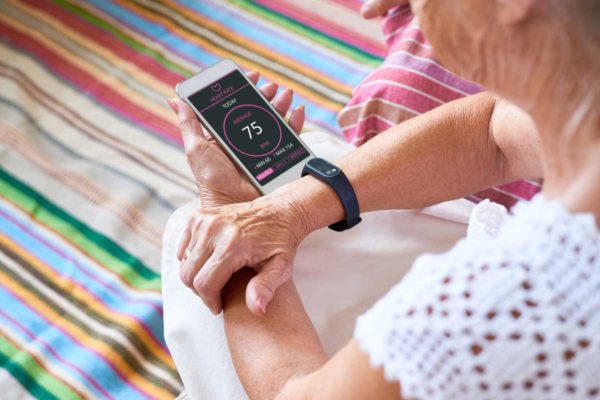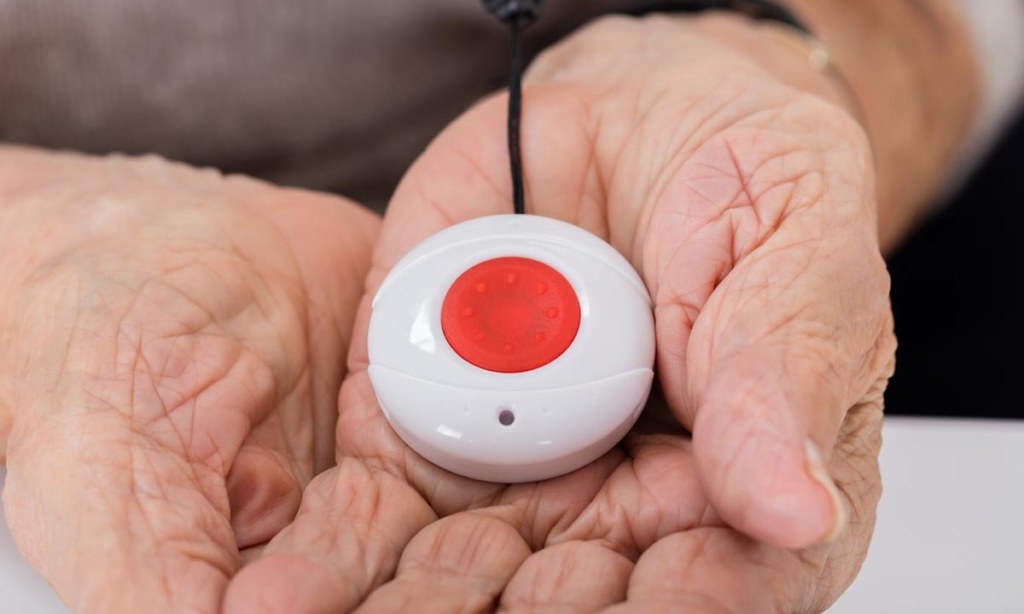According to the Centers for Disease Control and Prevention (CDC), there are around 36 million falls reported among older adults annually. One out of every five of these falls results in serious injury, such as a broken bone or traumatic head injury, requiring emergency medical care. By using a medical alert system, one has quicker access to medical assistance should a fall or injury occur. Availing yourself of this technology can reduce the risk of serious injury, decrease medical costs, and help you maintain your independence.
What Is a Medical Alert System?
A medical alert system (also commonly referred to as a personal emergency response system) is technology used to offer support and monitoring for those who are at an increased risk of medical emergencies. A medical alert device can easily provide you with immediate medical assistance without disrupting your daily life.
What Are the Types of Medical Alert Systems?
There is a wide variety of medical alert systems on the market today. Most systems can be grouped into two categories: landline/in-home systems or mobile medical alert devices.
1. Landline/In-Home

These systems were the first available types of medical alert systems. They work through a telephone connection, whether that be a landline or more commonly, a cellular connection. They typically consist of a base unit placed centrally in your home and a pendant necklace worn by the user or a mounted alert button. In case of an emergency, the user would either press the pendant button or the mounted alert button, which would then connect them to the medical alert company’s monitoring center. As many people are doing away with landline phones and depending solely on in-home cellular connection or Wi-Fi, considering the strength of the cellular connection is an important factor as well.
2. Mobile/Cellular

Similar to the landline option, the mobile medical alert systems consist of a help button (typically a pendant necklace or bracelet) which is directly connected to your mobile device. This allows a dispatcher from the emergency monitoring center to speak with you directly through your cell phone, whether you’re inside or away from the home. They can then dispatch emergency responders to your exact location.
There is also a combination of the phone/medical alert system, in which the cellular phone is capable of making personal calls but is also equipped with the emergency system to connect to the monitoring center in a time of need.
There are also many unique features that can be added to a medical alert system.
What Do Medical Alert Systems Consist Of?
A medical alert system will typically consist of two parts: a base station and a remote transmitter. The base station (or console) comes equipped with a microphone or loudspeaker, which allows two-way communication with a designated 24-hour call center once activated. The remote transmitter is the piece of equipment that is either worn (as a necklace or bracelet) or can be directly connected to your cellphone. Think of this as a portable base unit. When the call button is pressed, you’re automatically connected to the emergency call center. This brings us to a crucial component of medical alert systems: the emergency call center. The whole premise of medical alert systems is to create a way to contact assistance immediately. These call centers are staffed by fully trained employees who are available 24 hours per day, seven days a week. In addition to the trained emergency response employees, medical alert devices have a customer service line users can call in case there is an issue with your equipment.
As technology continues to improve, many medical alert systems can also include features such as fall detection, GPS tracking, medication reminders, environmental monitoring, caregiver tools and activity tracking.
- Fall detection: Using technology known as accelerometers, this option automatically triggers an alert to the emergency call system if the sensor detects a rapid change in position or a fall. The call button does not even need to be touched for this alert to be sent, which can be especially helpful if the user loses consciousness or is unable to speak.

- GPS: Global Positioning Systems, better known as GPS, is an important feature that will track your location. Once activated, the emergency call center will dispatch the closest emergency personnel based on that GPS location. In addition to GPS tracking, some medical alert systems offer geo-fencing. This allows caregivers to receive alerts if their loved ones travel outside of an established “safe zone,” and can be especially helpful for those caring for loved ones with dementia or memory disorders.
- Environmental monitoring: This feature includes a sensor in the base unit that can detect life-threatening changes in a person’s home environment, such as smoke or carbon monoxide. If the sensor picks these up, the medical alert device will automatically contact the call center and emergency services will be dispatched.
- Caregiving tools: This feature enables caregivers to set up alarms or reminders that help keep their loved one safe in their absence. Examples include medication reminders, appointment reminders, establishing a range or safe zone, or vital sign monitoring.
Additionally, most medical alert systems will include water-resistant equipment, quality battery life, and a variation of available ranges. Our expert reviewers have formulated an easy-to-read comparison of different medical alert system models based on hours of research and testing.
Who Should Consider the Use of a Medical Alert System?

More often than not, we associate medical alert systems with senior citizens, but anyone can use this technology. For instance, a medical alert system would benefit anyone who lives alone, has an increased risk of falls, or has been diagnosed with a chronic medical condition. According to the CDC, 85 percent of those aged 65 years and older have at least one chronic medical condition. These conditions, such as cardiovascular disease or diabetes, can cause symptoms requiring prompt assistance.
Unfortunately, we do not always know when a medical emergency will occur, but having the right assistive devices in place can greatly reduce the risk of serious injury when it does. Having the assurance of immediate connection to emergency services via a medical alert system can empower an individual to remain active and independent, while providing peace of mind to their family or caregivers.
Where Can I Get a Medical Alert System?
Medical alert systems are widely available. Most can be purchased online or by telephone, while others are also available in stores. It should be noted that in-home systems will require a technician to come to your home to install the unit.
How Much Do Medical Alert Systems Cost?
Another important consideration of medical alert systems is the cost. You should consider your monthly budget and specific needs in order to find the model that best fits. The price of the medical alert system typically varies based on specific features included in the package. There is usually an equipment fee which covers the cost of the base station and call button, as well as an activation fee. Most systems carry a monthly fee, which ranges from around $19-$50 per month on average. Additional features are generally available with a monthly fee. For example, many systems offer fall detection for an additional $5-$10 monthly fee. Generally, mobile and GPS-equipped systems are more expensive than in-home units.
You should also inquire about contracts, cancellation policies, discounts, tax deductions and insurance coverage when researching systems.
With the wide variety of systems and features available on the market today, finding a medical alert system that fits your budget is certainly feasible. Our Best Medical Alerts article is a comprehensive list of our top rated alert systems.
How to Pick the Right Medical Alert System
You might feel overwhelmed when trying to choose a medical alert system, as there are many makes and models available on the market. In order to help narrow the field, ask yourself these three specific questions when trying to decide:
- Do you mostly stay at home, or do you enjoy getting out of the house or traveling?
If you like to remain at home, a home medical alert system might be the most sensible option. This would still include a pendant or wall-mounted call button and can also still include newer features like fall detection. If you like to spend most of your days out of the house, perhaps a cellular option with GPS tracking or an extended range call button would suit you best. - Are you at an increased risk of falls or medical emergencies?
If so, a fully monitored device with fall detection might be an ideal option for you. - Do you prefer a fully monitored or unmonitored system?
A fully monitored system provides you with 24/7 access to the emergency call center. However, there is an option of getting an unmonitored system that would connect you to family, friends, or caregivers when the call button is activated.
Only you can decide what medical alert system is right for you. It’s important to evaluate your options and choose a system that best aligns with your lifestyle and medical needs.
Summary
According to the National Institute on Aging (NIA), a common fear in older adults is falling. As a result, many people avoid certain activities. Thanks to today’s technological advances, there is a wide variety of medical alert systems that can help you in your daily life. Empowering yourself with the right medical alert system can help you overcome that fear of falling while allowing you to maintain your independence.
Why Trust Us
At AgingInPlace.org, it is our goal to equip seniors and their family and caregivers with the most comprehensive and up-to-date reviews of assistive devices so that they can best prepare their home environments and successfully age in place.
About The Author
Danielle Pagano is a board-certified family nurse practitioner currently practicing internal medicine in rural Illinois. She has extensive experience in primary and long-term care, including spending over a decade working in the fields of preventive medicine and complex chronic disease management.


